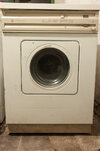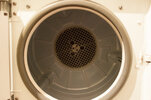Here's the disassembly of a heat pump based dryer. From what I see, I would say it's more expensive to buy and more expensive to fix. Given the complexity, there is higher probability of failure. What people save in electricity, they will pay in the initial buy, and in replacements and repairs. My recommendation is don't get one. If you don't agree, don't bother to argue. I don't care and am just giving my view.
Last edited:



